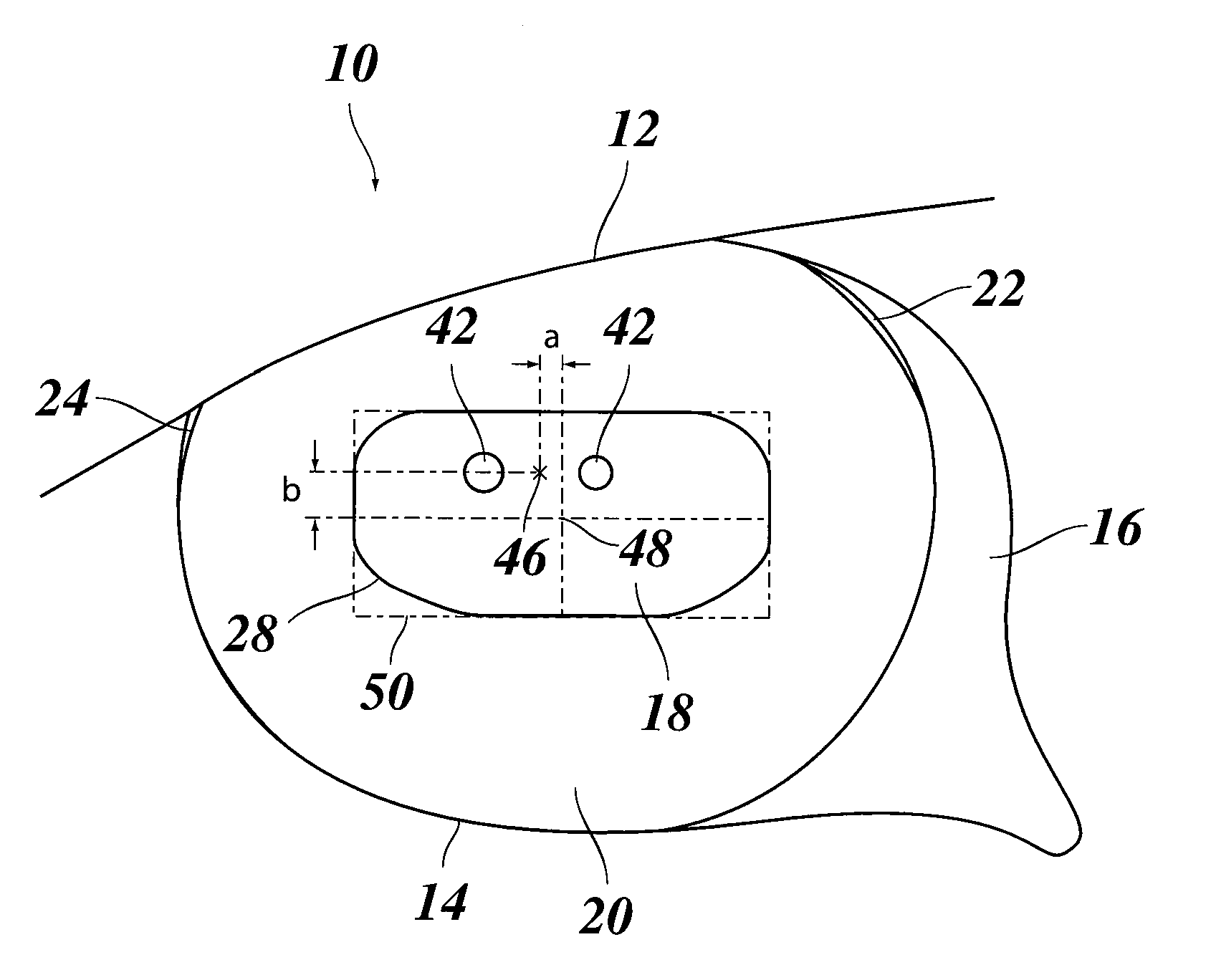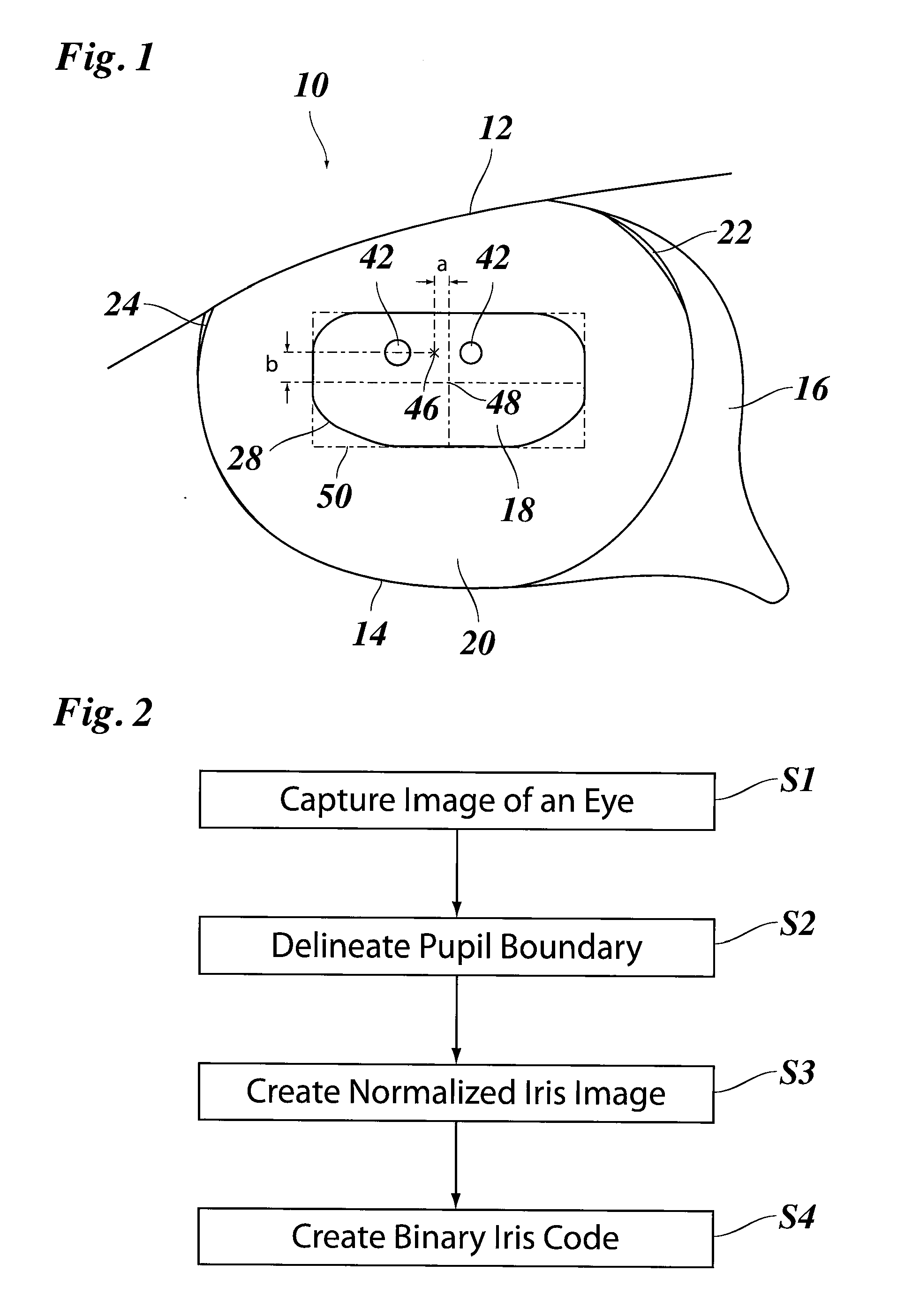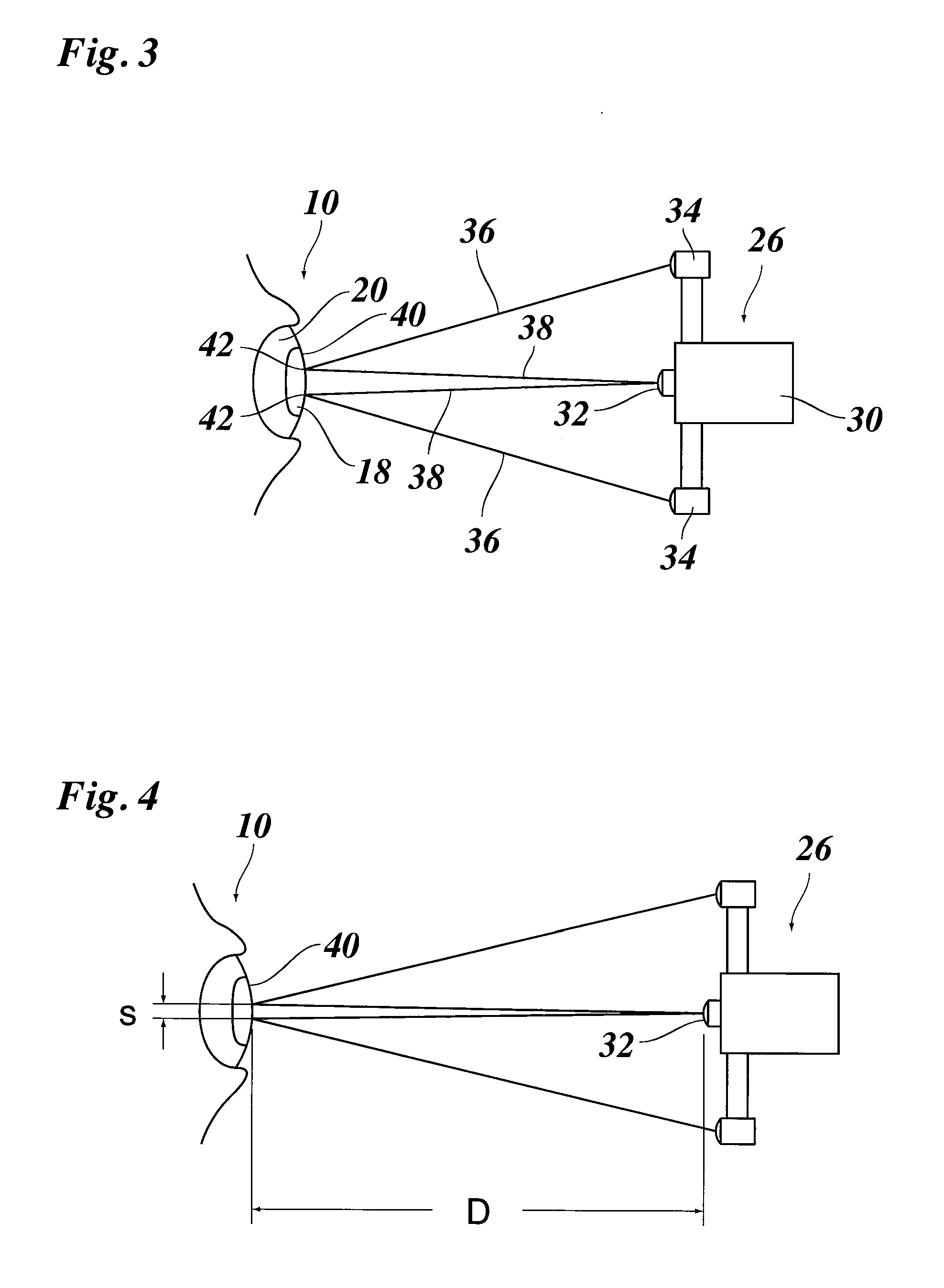Method of normalizing a digital image of an iris of an eye
a technology of iris and digital image, applied in the field of normalizing the digital image of the iris of the eye, can solve the problem that the iris will normally be distorted to some extent, and achieve the effect of improving the reliability of identification
- Summary
- Abstract
- Description
- Claims
- Application Information
AI Technical Summary
Benefits of technology
Problems solved by technology
Method used
Image
Examples
Embodiment Construction
[0044]As an example of an image of an eye of a vertebrate, FIG. 1 shows an image of a (left) eye 10 of a horse. An upper lid 12, a lower lid 14, a conjunctiva 14, a pupil 18 and an iris 20 of the eye have been shown schematically. As is typical for horses, the pupil 18 is elongated in lateral direction. A bright sclera 22 of the eye is obscured almost completely by the eyelids, so that only small fractions of an outer boundary 24 of the iris (iris / sclera boundary) are visible.
[0045]FIG. 2 illustrates essential steps of a method for creating an iris code from an image of the type shown in FIG. 1.
[0046]In a step S1, an image of the eye is captured with a digital camera 26 (shown in FIG. 3).
[0047]In step S2, the digital image is subjected to image processing algorithms for delineating a boundary 28 of the pupil 18.
[0048]In step S3, the image is subjected to further image processing for creating a normalized iris image, i.e. an image of the iris that is normalized to a standard size of ...
PUM
 Login to View More
Login to View More Abstract
Description
Claims
Application Information
 Login to View More
Login to View More - R&D
- Intellectual Property
- Life Sciences
- Materials
- Tech Scout
- Unparalleled Data Quality
- Higher Quality Content
- 60% Fewer Hallucinations
Browse by: Latest US Patents, China's latest patents, Technical Efficacy Thesaurus, Application Domain, Technology Topic, Popular Technical Reports.
© 2025 PatSnap. All rights reserved.Legal|Privacy policy|Modern Slavery Act Transparency Statement|Sitemap|About US| Contact US: help@patsnap.com



